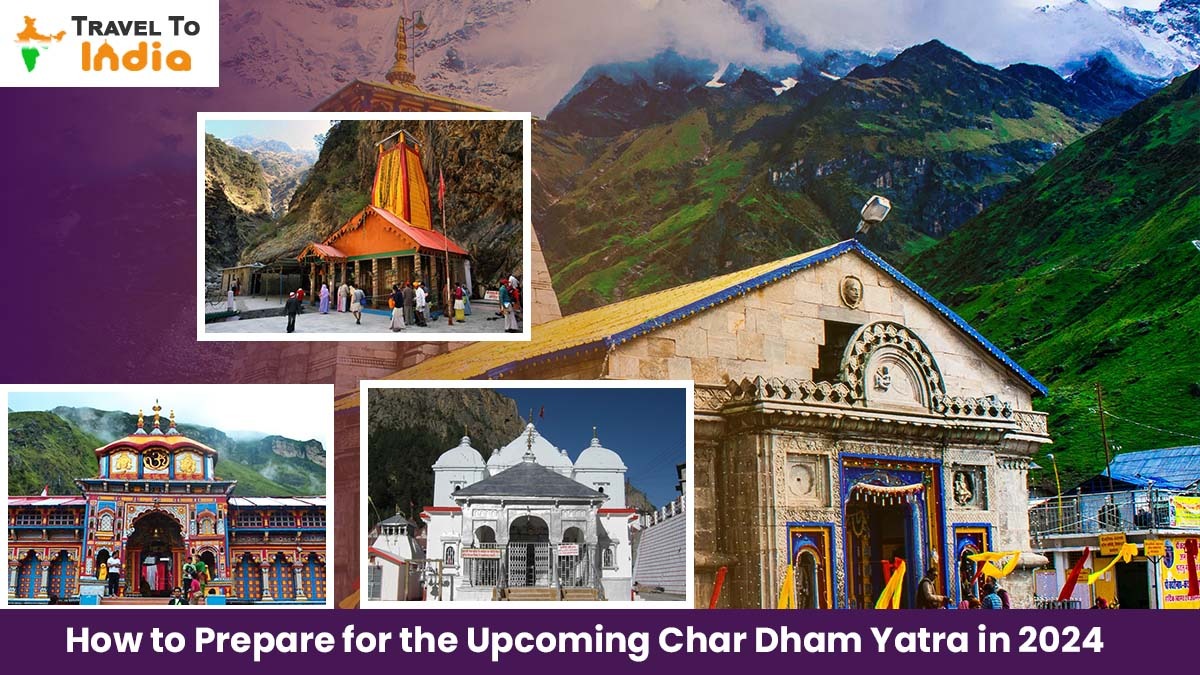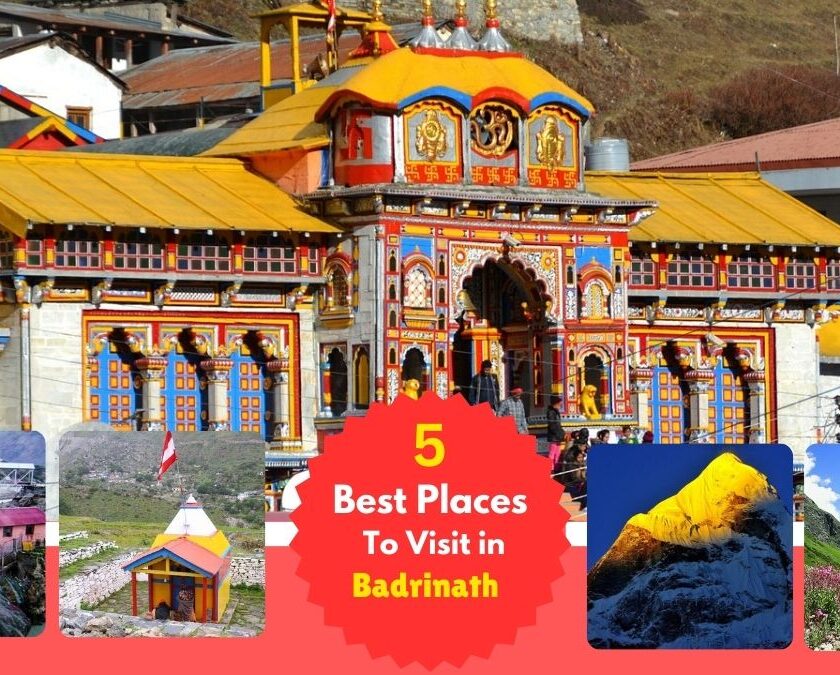Uttarakhand, also referred to as Devbhoomi or the Land of Gods, is a sacred haven filled with temples that warmly invite devotees throughout the year. Among the many religious sites in Uttarakhand, the Char Dham Yatra holds immense religious value. This pilgrimage entails a spiritual journey to four holy sites: Yamunotri, Gangotri, Kedarnath, and Badrinath, all nestled high up in the majestic Himalayas. In Hindi, ‘char’ translates to four, and ‘dham’ signifies religious destinations, making this Yatra a cherished voyage for the faithful seeking blessings amid the divine aura of the mountains.
Opening & Closing Period for Char Dham Travel
The high-altitude shrines, perched amidst the grandeur of the Himalayas, remain closed for about six months each year, welcoming devotees with the arrival of summer (typically in April or May) and bidding goodbye as winter sets in (around October or November). Tradition dictates that the Char Dham Yatra should be undertaken in a clockwise manner. Thus, the sacred journey starts from Yamunotri, then moves onward to Gangotri, further to Kedarnath, and culminates at Badrinath. Some devotees opt for a Do Dham Yatra that focuses their pilgrimage on the revered shrines of Kedarnath and Badrinath.
Opening Dates of Chardham in 2024
- Yamunotri Opening Date: 10 May 2024
- Gangotri Opening Date: 10 May 2024
- Kedarnath Opening Date: 14 May 2024
- Badrinath Opening Date: 16 May 2024
Closing Dates Tentative as per auspicious days
- Yamunotri Closing Date: 31 October 2024
- Gangotri Closing Date: 2 November 2024
- Kedarnath Closing Date: 2 November 2024
- Badrinath Closing Date: 9 November 2024
Yamunotri Temple Timings
- Morning Darshan Timing are from 6:15 am to 2:00 pm
- Evening Darshan Timing are from 3:00 pm to 9:30 pm
- Aarti Timing are 6:00 am and 7:45 pm
Gangotri Temple Timing
- Morning Darshan Timing is from 6:00 am to 1:00 pm
- Evening Darshan Timing is from 4:00 pm to 8:00 pm
- Aarti Timings are 6:30 am and 7:30 pm
Kedarnath Temple Timing
- Darshan Timings are from 4:00 AM to 8:00 PM
- Aarti Timings are06:00 am and 08:30 pm
Badrinath Temple Timing
- Morning Darshan Timing is from4.30 am to 1:00 pm
- Evening Darshan Timing is from 1:00 pm to 9:00 pm
- Aarti Timings are 4.30 am and 8:30 pm
Char Dham Yatra by Air
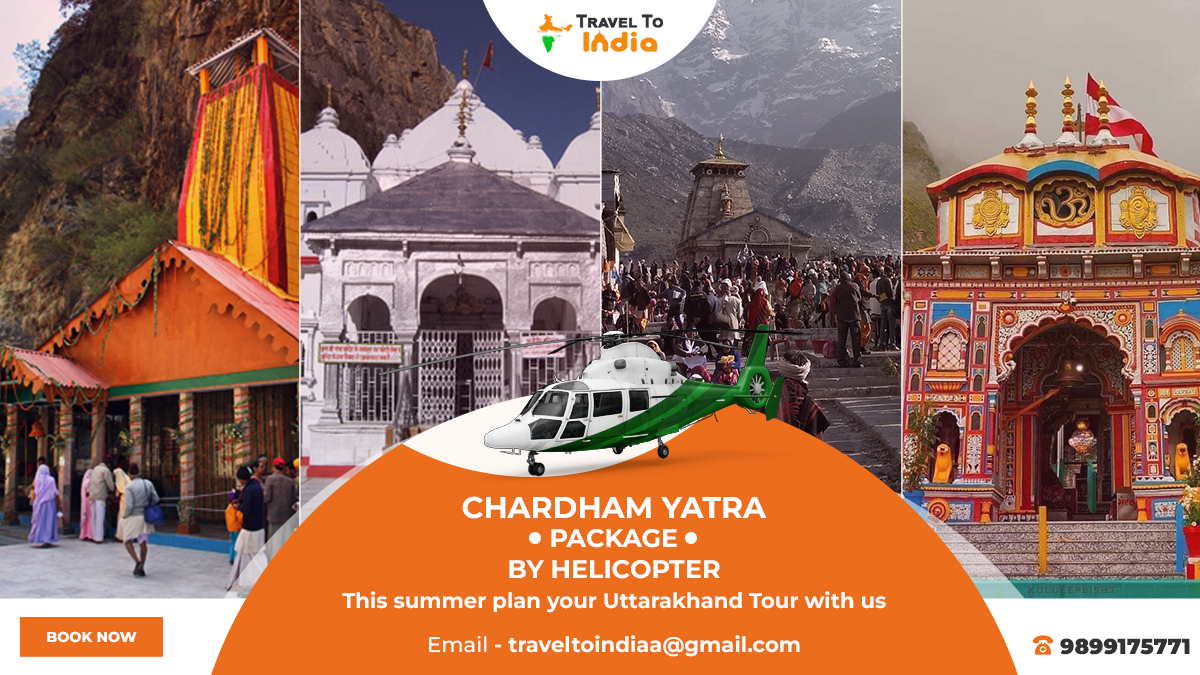
Begin your spiritual journey in the revered city of Haridwar, often regarded as the gateway to spirituality. Chardham Yatra by Helicopter proves to be the ideal choice for those seeking to avoid busy schedules. It serves as the focal point for most Char Dham tour packages and enjoys excellent connectivity to Delhi and other major cities via road and rail. Haridwar can be easily accessed by state transport and private buses from New Delhi and nearby areas.
- Day 1: Dehradun to Yamunotri
Your journey kicks off at the government helipad on Sahastradhara Road, Dehradun, the central point of this adventure. The flight times are predetermined and clearly communicated. Before takeoff, experienced pilots and ground staff from the helicopter service provide passengers with essential information about the trip.
Setting off, the helicopter heads towards Kharsali. Upon reaching Kharsali, you can visit the Yamunotri temple, just a short 5 km away. To reach the temple, a comfortable palanquin ride awaits. After exploring the spiritual site, you will return to Kharsali, where you will spend the night.
- Day 2: Kharsali to Gangotri
Fuel up with a hearty breakfast before your next adventure begins. Your journey continues as you take a helicopter ride to Harsil. Once you touch down, a short 25 km road trip, approximately 45 minutes by taxi, will take you to the revered Gangotri temple. Spend meaningful moments at this sacred site before retracing your steps back to Harsil by road.
As the day winds down, take some time to explore the charms of Harsil in the evening light. After your explorations, return to your hotel.
- Day 3: Gangotri to Kedarnath
Rise and shine to another day of spiritual exploration. After a satisfying breakfast, aboard the helicopter that will take you to the Phata helipad. Here, you will change choppers and continue your journey towards the sacred destination of Kedarnath.
Upon arrival, a brief 30-minute walk from the helipad will lead you to the Kedarnath temple. Spend serene moments in prayer. Following your spiritual encounter, the helicopter will whisk you away to Guptkashi, where you will find your resting place for the night.
- Day 4: Guptkashi to Badrinath
Morning arrives, and after a wholesome breakfast, the helicopter will transport you to the divine land of Badrinath. Upon arrival at the Badrinath helipad, the choice is yours: you can opt to settle into your hotel, refresh yourself, and then make your way to the temple, or you might decide to head straight to the temple for your prayers.
As the day progresses, take some time to wander through the charming streets of Badrinath town. When the day’s explorations are done, retreat to your hotel and enjoy comfort and solace in the peaceful night.
- Day 5: Badrinath to Dehradun
Set your alarm for 4 in the morning to witness the awe-inspiring Maha Abhishek ceremony of Lord Badrinarayan, a divine ritual. After this spiritual experience, return to your hotel for a hearty breakfast and prepare yourself for the journey ahead.
Soon after, take to the skies once more, flying back towards Dehradun. As you soar through the air, carry with you the memories of these sacred moments, and the tranquillity they brought.
Also Read: Complete Travel Guide to Plan Chardham Yatra by Helicopter
Tips for Char Dham Tour 2024
The following tips will help you complete your sacred journey smoothly.
- Consider booking accommodations, transportation, permits, and any required services well in advance.
- Start a regular exercise routine months before your trip to prepare your body for the trekking and climbing involved.
- Pack warm clothes, rain gear, sturdy footwear, a good backpack, a first aid kit, a torch, and a water bottle for unpredictable Himalayan weather.
- Familiarize yourself with altitude sickness symptoms.
- Show respect for this sacred journey by dressing modestly, removing shoes at temples, and following local traditions.
- Hire a local guide who can navigate the terrain, bridge language gaps, and enrich your experience with cultural insights.
- Stay adaptable; the journey may have unexpected challenges.
- Keep yourself hydrated by drinking water regularly, and strictly avoid alcohol to prevent dehydration at high altitudes.
- Take care of your well-being; get sufficient rest, maintain a balanced diet, and avoid risky behaviour.
- Secure travel insurance, especially for remote areas, to provide assistance in case of emergencies.
- Opt for the shoulder season to avoid crowds, expensive accommodations, and permit difficulties.
- Always carry a valid ID proof, a mandatory requirement when visiting the temples.
- Be aware of your surroundings and take necessary precautions to always ensure your safety.
The Sacred Charm of Char Dham Temples
Yamunotri temple, nestled in a narrow gorge near the source of River Yamuna (India’s second-most sacred river after the Ganga) in Uttarkashi district, is a tribute to Goddess Yamuna. Uttarkashi district is also graced by Gangotri, dedicated to Goddess Ganga, the holiest river in Indian mythology. In Rudraprayag district lies Kedarnath, a sanctuary dedicated to Lord Shiva. Lastly, Badrinath, home to Badrinarayan Temple, reveres Lord Vishnu. Advance Char Dham Yatra Booking is neccessary dring peak season to experience the divine energy. The Char Dham Yatra is both divine and demanding, testing the pilgrims’ mettle, but it also nurtures the soul.
Char Dham Temples
For Hindus, completing the Pilgrimage Tour to these four sacred destinations is believed to pave the path to salvation, known as Moksha. These revered sites offer seekers an opportunity for spiritual awakening and enlightenment. For the well-being of your loved ones and spiritual fulfilment, you should get in touch with us. We offer Chardham Yatra Fixed Departure from Haridwar at a reasonable price so that every devotee can offer their prayers to their deity without being concerned about the budget.
Badrinath
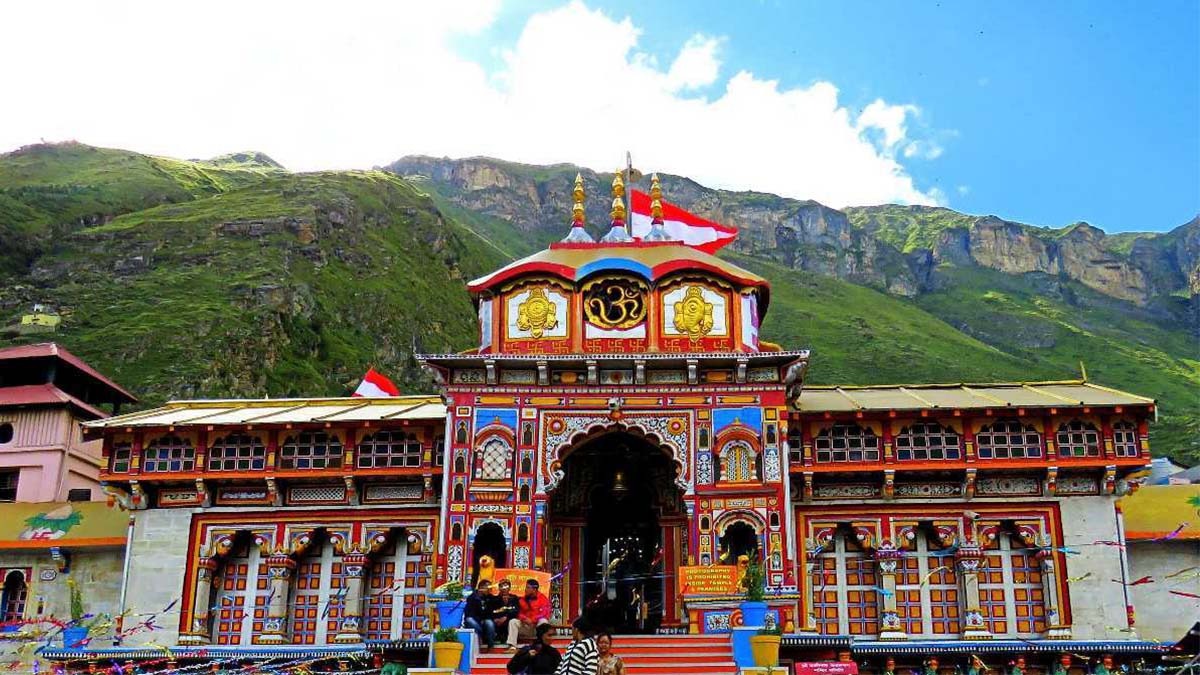
The sacred town of Badrinath, nestled in the Garhwal hills of Uttarakhand, is the divine abode of Lord Vishnu. This ancient temple, mentioned in revered texts like the Vishnu Purana, opens its doors to devotees for a mere six months every year, from the last week of April to the first week of November.
Within the temple’s main shrine, rests a shaligram deity of Lord Badrinarayana. Legend whispers that in this very spot, Lord Vishnu lost in deep meditation, remained unaffected by the biting cold. Goddess Lakshmi, in her divine grace, shielded him in the form of a Badri Tree. It is said that it was during this sacred incident that Vishnu named this hallowed place Badrika Ashram, forever sanctifying it in the annals of divine history.
Kedarnath
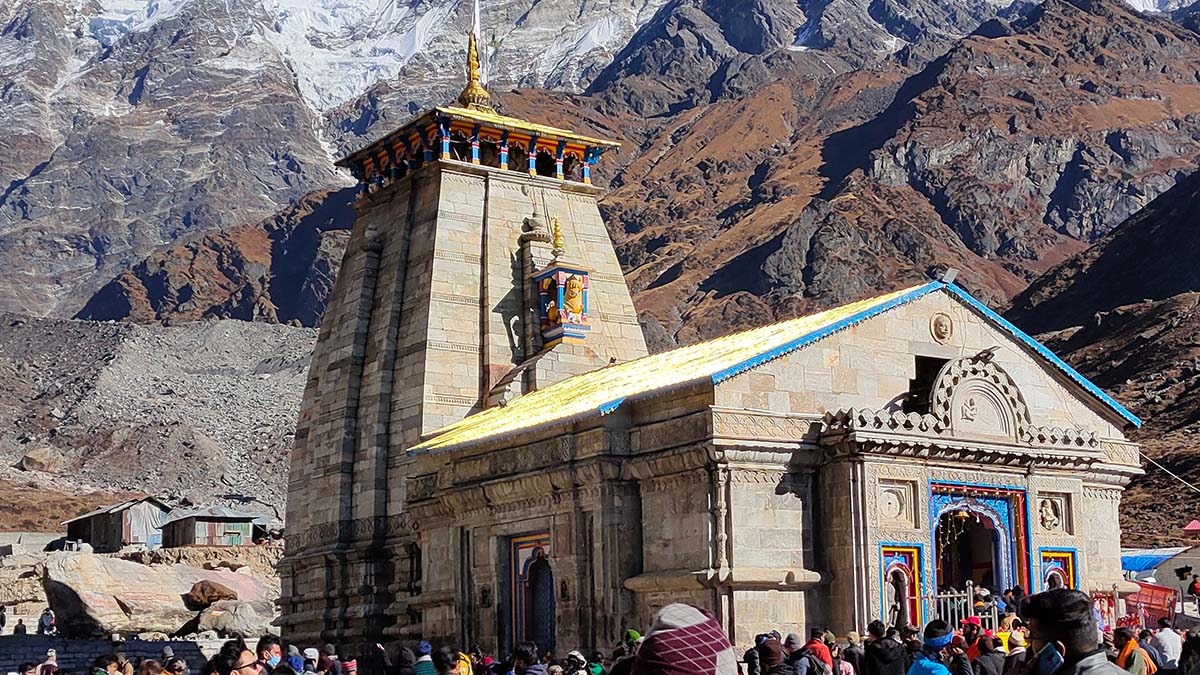
Kedarnath nestles near the source of the Mandakini River, surrounded by the icy beauty of the Chorabari Glacier and framed by the rugged Himalayan peaks. Located at an elevation of 11,755 feet, Kedarnath finds its closest access point at Gaurikund, merely 14 kilometres away, marking the end of the road. Within the temple, a revered stone hump holds a mythological tale, rooted deep in the Mahabharata epic. It recounts the story of the Pandavas, who, after defeating their own kin, the Kauravas, sought forgiveness from Lord Shiva.
Initially, Shiva transformed into a bull and descended to earth, leaving his hump in Kedarnath, close to the Chorabari Glacier. This significant spot is marked by the ancient 8th-century temple of Adi Shankaracharya. Interestingly, the other parts of the bull’s divine form are worshipped at the remaining Panch Kedar shrines: its arms at Tunganath, navel at Madmaheshwar, face at Rudranath, and hair at Kalpeshwar.
Gangotri
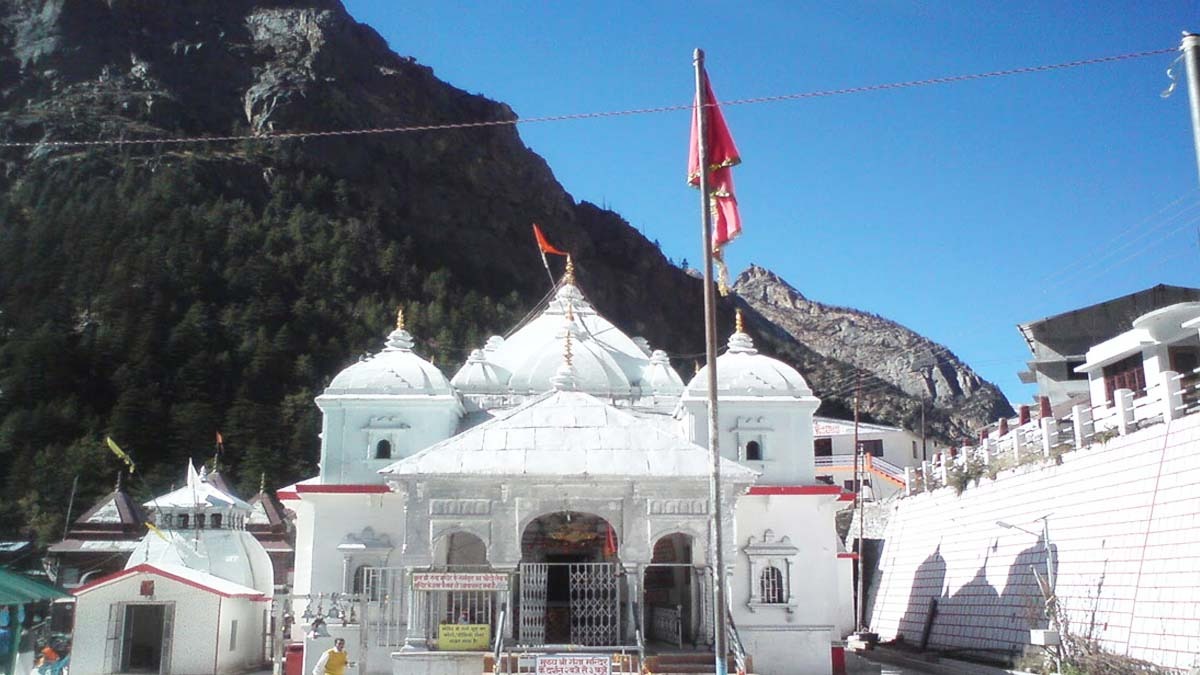
The Gangotri Temple is revered as the source of the sacred Ganges River in Hindu mythology. Legend has it that a rock at this site acted as a buffer and saved the Earth from the powerful rush of waters that flowed from Lord Shiva’s heavenly locks. It is believed that Lord Shiva strategically placed this rock to withstand the river’s force. Built in the 18th century by Amar Singh Thapa, a Gorkha commander, the temple is a testament to this ancient belief. Perched at an altitude of 10,170 feet, it rests beside the Bhagirathi River, which is called Bhagirathi until it meets the Alakananda at Devprayag.
The Gangotri Temple opens its doors on Akshay Tritiya, usually in May, and closes on Bhai Duj, typically in late October or November. Pilgrims often carry bottles filled with holy water from this sacred place. Besides the main shrine, there are several smaller temples nearby, each echoing the story of Ganga’s evolution and tracing its mythological origins.
Yamunotri
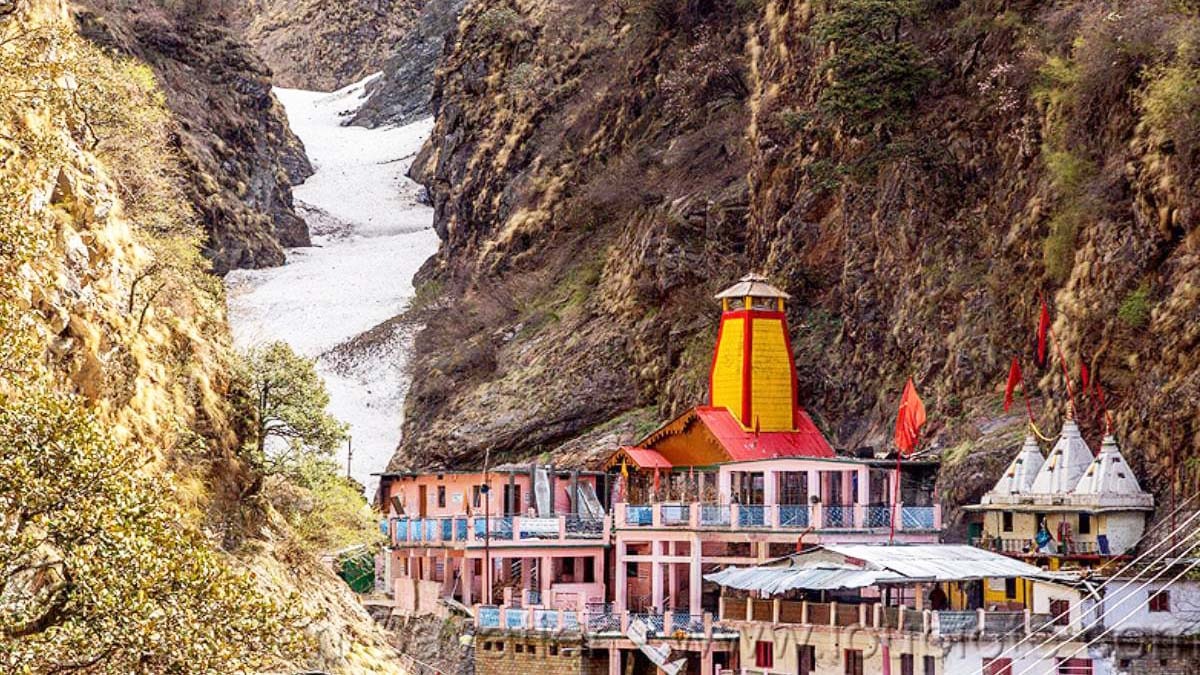
The Yamunotri Temple, part of the revered Chardham pilgrimages, was constructed in the 19th century near the pristine source of the holy Yamuna River. To reach this sacred destination, pilgrims cover a scenic 5-kilometre trek from the remote village of Janki Chatti. Surrounding the temple, natural hot springs offer a serene opportunity for devotees to take a cleansing dip. Here, amidst the spiritual atmosphere, pilgrims can often be found cooking potatoes and rice as offerings, known as prasad.
Yamunotri, nestled within forested peaks and a sprawling valley, holds a unique allure. The Yamuna River, believed to be the daughter of Surya and sister of Yama, is considered the second holiest river in India, following the Ganges. Taking a dip in its sacred waters is believed to cleanse one of their sins. Immersing yourself in the holy aura of Yamunotri, you will discover not just the main temple but also numerous shrines, temples, and ashrams in the vicinity, each spreading a sense of divine tranquillity.

